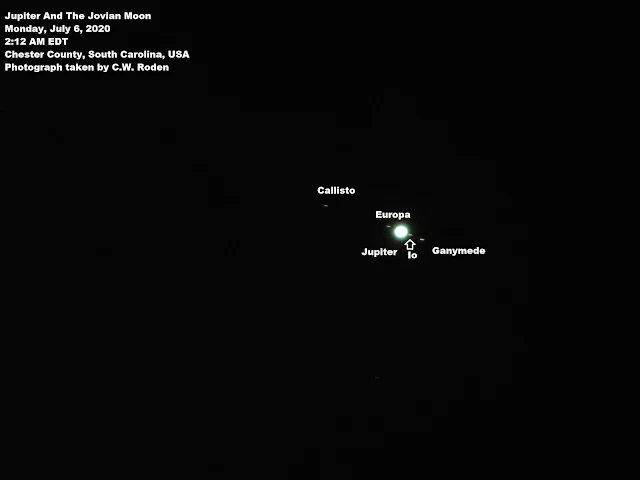Good morning fellow stargazers!
This morning I woke up about an hour before sunrise and went outside to see beautiful clear skies -- as well as the loud chirping of the legions of Cicadas (Neotibicen linnei, commonly called Linne's cicada) that play their music in the evenings and early mornings in mid-summer down here in Dixie.
Today is the last day of July, the first full month of summer, with the hottest month of August looming.
I focused on the rising dawn and saw bright, beautiful Venus in the east just over the tree line. I snapped this photo of Venus and managed to capture the faint stars of the Constellation Auriga the Charioteer.
Y'all notice the star Elnath at the southern tip of Auriga. This star used to belong both to Auriga, where it was known as the heel of the Charioteer, and to the Constellation Taurus the Bull -- which unfortunately didn't come out well in the dawn's light, although its brightest star, Aldebaran, the fourteenth-brightest star in the night sky, is clearly visible in the upper right of the shot.
Auriga's brightest star, Capella, marks the Charioteer’s left shoulder. Capella is the sixth-brightest star in the night sky and although it appears to the naked eye as a single star, Capella is actually a quadruple star system group organized in two binary pairs made up of the stars: Capella Aa, Capella Ab, Capella H, and Capella L.
Well what better way to close out July and my last blog post of the month. I hope y'all enjoyed my photography, and I hope to have more soon, God and clear skies willing.
Until then fellow stargazers have a wonderful Dixie day and y'all keep your eyes to the night skies.



































